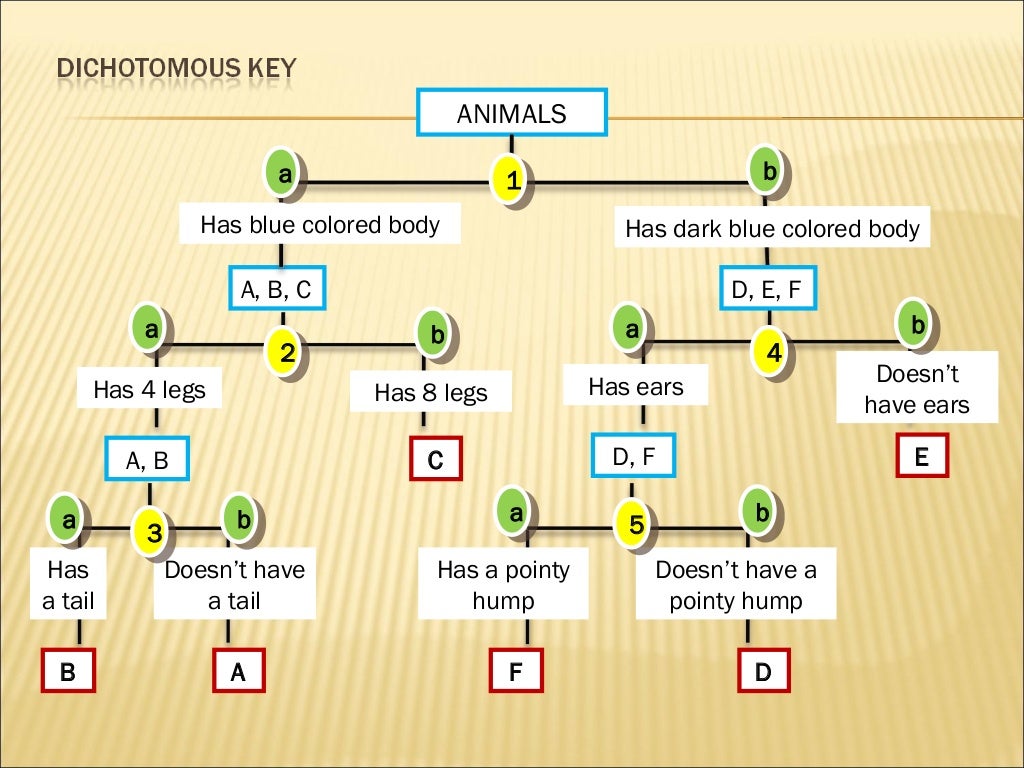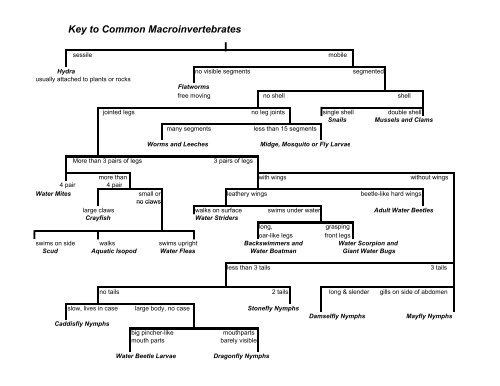

Since we were told that the mystery organism has no wings, we will follow the branch to the right. The junction reads “wings” to the left and “no wings” to the right. In order to read the dichotomous key, we start at the top and trace downward until we reach our first junction.

In order to identify the organism, we need to read the dichotomous key using the description provided. The question goes on to describe an invertebrate organism that was found in a garden by a child. Invertebrates typically possess soft, fluid-filled bodies or an exoskeleton or shell. An invertebrate is an organism that does not have a spine. The question informs us that this dichotomous key was designed to identify common garden invertebrates. The end of this branch tells us that our tree is a “fan palm.” The next juncture says “pinnate/palmate.” Since the leaves in our tree spread out in a shape like fingers from a palm, we will follow the branch to the right. The next juncture says “tall/short.” Since this tree is tall, we will follow the branch to the left. Tracing down from the top, the first juncture says “compound leaves/simple leaves.” Since the tree in our picture has compound leaves, we will follow the branch to the left. Now, let’s identify the species of this tree using the dichotomous key in Figure 1. Repeat steps 3 through 6 from this list for all of the remaining rows of the dichotomous key until you reach a taxon.Follow the direction that corresponds to the appropriate description.Decide which option best describes your specimen.Read the two options, 1a and 1b, in the dichotomous key.Read the description in row 1 of the dichotomous key.Observe the specimen you are going to identify.The following are the steps to use a list-style dichotomous key to identify a specimen: An example of a dichotomous key designed to be used by children to classify common invertebrates they may find in a garden is shown below.

Dichotomous key series#
A dichotomous key uses a series of statements, descriptions, or yes or no questions grouped into pairs, which eventually lead to the correct identity of a specimen or organism. Dichotomous is a word that means “two parts” (remember that the prefix di- means “two”). A dichotomous key is a tool that is used to identify organisms. This question is asking us to fill in the blanks in a statement that describes what a dichotomous key is and what it is used for.

Dichotomous key how to#
In this explainer, we will learn how to design and use a dichotomous key.


 0 kommentar(er)
0 kommentar(er)
